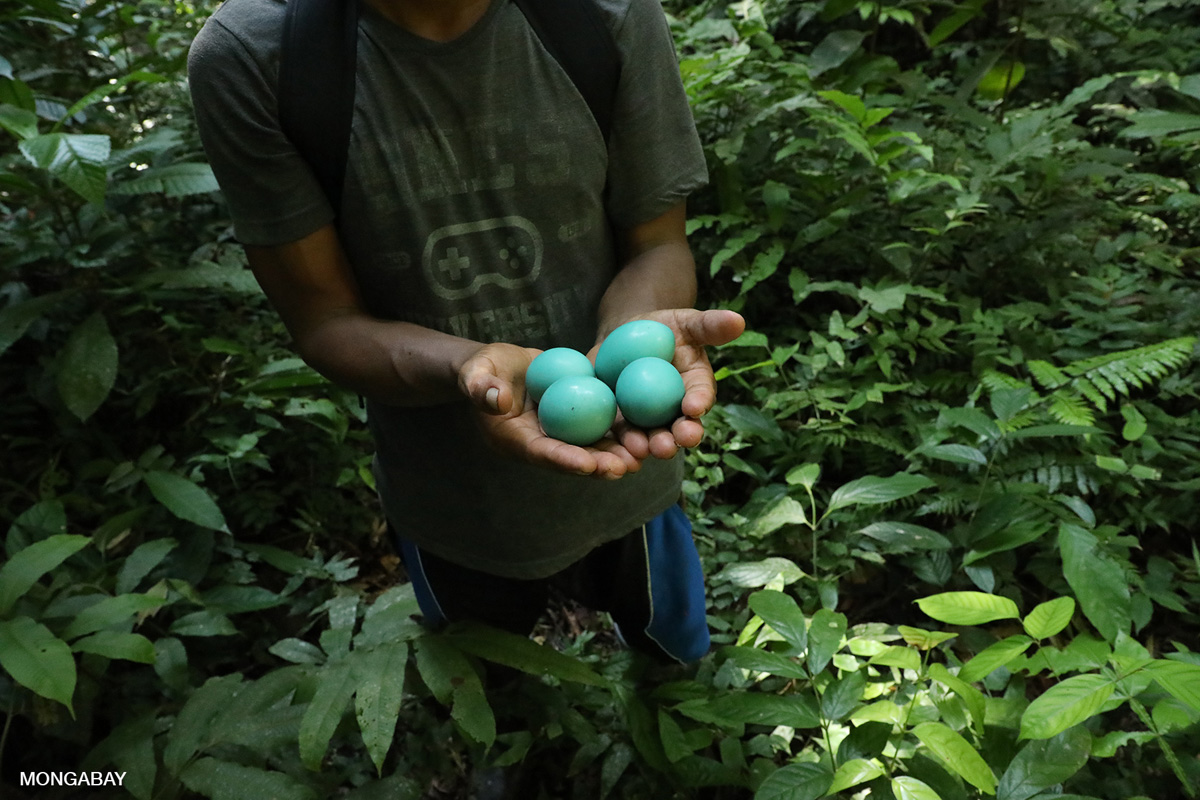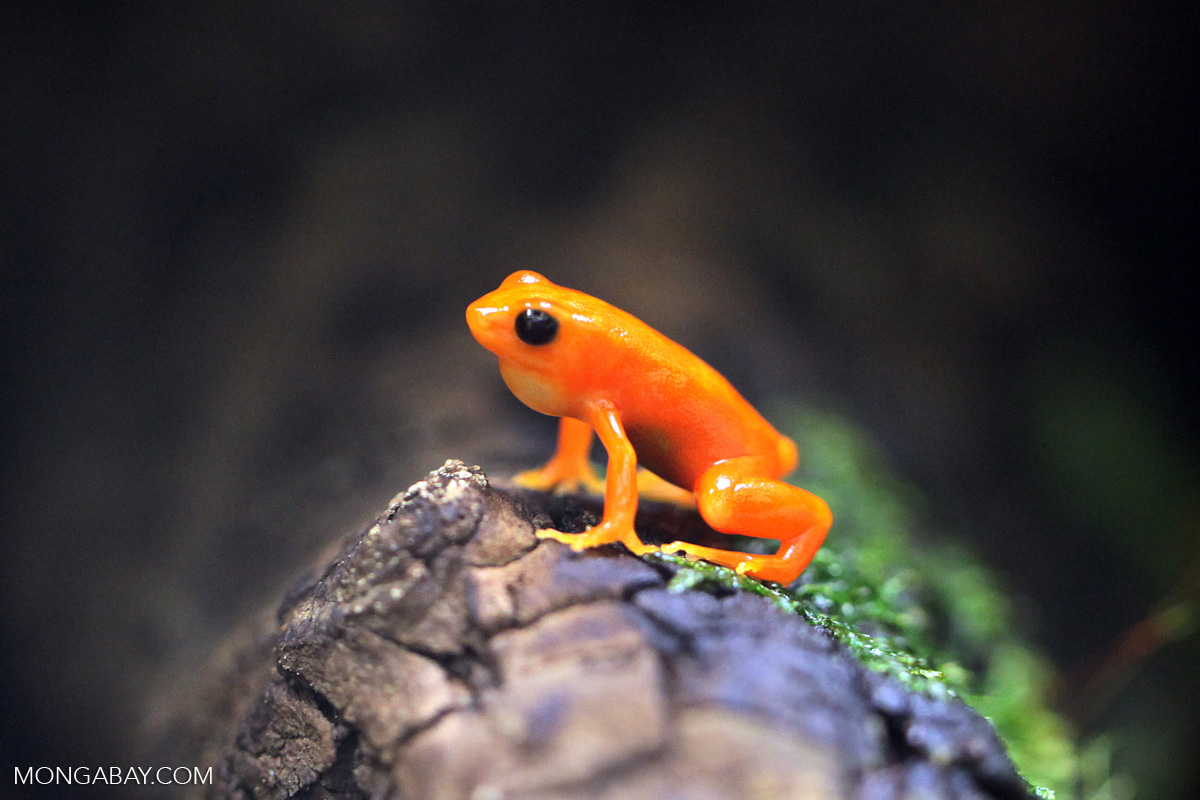- The Aichi Biodiversity Targets are an ambitious set of global goals aimed at protecting and conserving global biodiversity.
- In a recently published paper, a team of international researchers offer suggestions for how the newest version of the Aichi targets, referred to as the post-2020 global biodiversity framework, can be implemented effectively.
- The authors suggest strengthened accountability for parties participating in the Aichi targets similar to the Paris Agreement.
- Researchers also point to the need for greater resources directed toward biodiversity, more research about biodiversity and how to protect it, and better review mechanisms for Aichi commitments at the national level.
As the planet continues its trajectory into what some have dubbed “the sixth mass extinction,” the diversity of life is on Earth is at risk. The Aichi Biodiversity Targets were established by the Convention on Biological Diversity (CBD) in an effort to protect and conserve the biodiversity that underpins global food security, health and clean water. However, according to an assessment by the United Nations, none of the 2020 Aichi targets were met.
In a recently published paper in the journal Nature Ecology and Evolution, a team of international researchers offer suggestions for how the newest version of the Aichi targets, spelled out in the post-2020 global biodiversity framework (post-2020 GBF), can be implemented effectively.
The authors blame past failures to reach the targets on an overall lack of investments, resources, knowledge, and accountability toward biodiversity conservation. The national goals adopted in each participating country did not always align with the Aichi targets, they say, and the sum of the national successes was not sufficient to reach the overall global targets.

A lack of accountability was mentioned throughout the study. The question being: once a country has committed to protecting biodiversity, who holds them accountable? At the moment, committing to the Aichi targets is voluntary and non-compulsory, and results from each party are self-reported to the CBD. Because these agreements are non-binding, the path to translating and implementing targets into national legislation is unclear.
Ideally, the paper says, the post-2020 GBF would be legally binding. However, this could take some time. The Paris Agreement, for instance, took four years to negotiate. It may also be at odds with the ethos of the CBD.
“The CBD itself is based on the premise that parties have the sovereign right over the use of their biodiversity,” Neville Ash, director of the U.N. Environment Programme’s World Conservation Monitoring Centre, told Mongabay. “It’s unrealistic to think that the post-2020 framework would include a legal obligation to deliver against its global targets.”
The word “accountability” is seldom used in negotiations around the post-2020 GBF, Ash says. Instead, there is a discussion of “a strengthened, transparent approach to implementation.” The intention is not to put in place any kind of punitive measures. Instead, Ash says, they are working to identify where there is a need for additional resources, support, and capacity to make progress.
“Strengthening accountability and resources need to go hand in hand,” he said. “Strengthened accountability mechanisms without a commitment for additional resources are unlikely to be successful.”

Both the paper and Ash agree that more resources, financial and otherwise, should be directed toward protecting and conserving biodiversity. According to the CBD’s latest report, it could cost between $103 billion and $895 billion annually, depending on the level of activity, to support the global biodiversity framework.
“These are not staggeringly huge figures,” Ash said. “And they are dwarfed, of course, by the current financial flows to activities which harm biodiversity, and particularly from incentives in agriculture and fossil fuels, and fisheries … And so that leads to the obvious option for redirecting resources”
These resources, the paper suggests, might come from payments for ecosystem services, or biodiversity-related taxes, fees and charges. For instance, countries with tropical forests could charge a tropical carbon tax to fill the investment gap for biodiversity in other countries. Benefit-sharing, such as from digital sequencing information, could also direct resources to developing countries with biodiversity hotspots.
“More than half of global GDP is dependent on high-functioning biodiversity and ecosystems — and it is from food to tourism, you just name it,” Ursula von der Leyen, head of the European Commission, said in a speech at the World Economic Forum last month.
“The cost of inaction is much greater than the cost of action to address the problem,” Ash said. “It’s cheaper to stop causing problems.”

The study points to scientific knowledge gaps at the national and regional levels. To protect biodiversity, we need to know what lives where as well as how to best conserve it. This information is not available in all areas, and more research is needed. In particular, the study calls for, “improved integration of scientific, Indigenous and local knowledge under science–policy interfaces at different levels to support decision-making.”
The current review mechanisms for the Aichi targets are criticized. “It is hard to associate pledged national commitments with actual implementation without transparent and rigorous review systems,” the paper says. The current voluntary review system is a step in the right direction, but the authors call for a more rigorous review mechanism such as the compulsory Measurement, Reporting and Verification system from the United Nations Framework Convention on Climate Change.
The paper points to several ways in which the Paris Agreement could be used as a guidepost for the Aichi targets. In her statement to the WEF, von der Leyen also called for “a Paris-style agreement for biodiversity.” The issue with this, Ash says, is that under the Paris Agreement it is much easier to measure countries’ relative contributions to the problem of greenhouse gas emissions, whereas the discussion under the biodiversity convention about the relative contribution of different parties to achieving that end goal is more difficult. For instance, it may matter more for global biodiversity what happens in a biodiversity hotspot than in an already heavily developed country.

The post-2020 GBF is being discussed by the CBD and other stakeholders with plans for adoption at the 2021 United Nations Biodiversity Conference in Kunming, China. And the targets are shaping up to be more ambitious than before. However, none of the biodiversity targets set by the CBD were met in 2010 or 2020, which begs the question: why continue to set more ambitious targets for 2030 and 2050?
Should these new targets be more achievable to be able to communicate to the world that progress is being made? The general sense, Ash says, is no. Targets should articulate what’s needed, so we know where we need to go.
“Is there value in setting targets? Yes, there is. Because we need to know what needs to be done to put us on a pathway to sustainability,” Ash said. “There is a difference between articulating a target, which is what needs to be done to keep the world on the pathway to the [2050] Vision … versus what might be feasible over the next decade to deliver.”
The process of setting targets also draws political attention to the issue. The attention given by heads of state to biodiversity over the past year, even in such difficult times with many other issues going on, Ash says, is because there’s this momentum toward setting new targets and setting a new framework.
“There are no shortcuts to conserving biodiversity,” Ash said, adding it needs to be done “through addressing the drivers of its loss…climate change… unsustainable consumption and production patterns, food systems… fisheries in the oceans and agriculture on land, invasive species, pollution, and over-harvesting. So, we know what the drivers are and we know what needs to be done to address them.”
Citation:
Xu, H., Cao, Y., Yu, D., Cao, M., He, Y., Gill, M., & Pereira, H. M. (2021). Ensuring effective implementation of the post-2020 global biodiversity targets. Nature Ecology & Evolution, 1-8. doi:10.1038/s41559-020-01375-y
Banner image: The critically endangered golden mantella (Mantella aurantiaca) is one of Madagascar’s most threatened amphibian species. Photo by Rhett A. Butler.
Liz Kimbrough is a staff writer for Mongabay. Find her on Twitter@lizkimbrough_
FEEDBACK: Use this form to send a message to the author of this post. If you want to post a public comment, you can do that at the bottom of the page.
